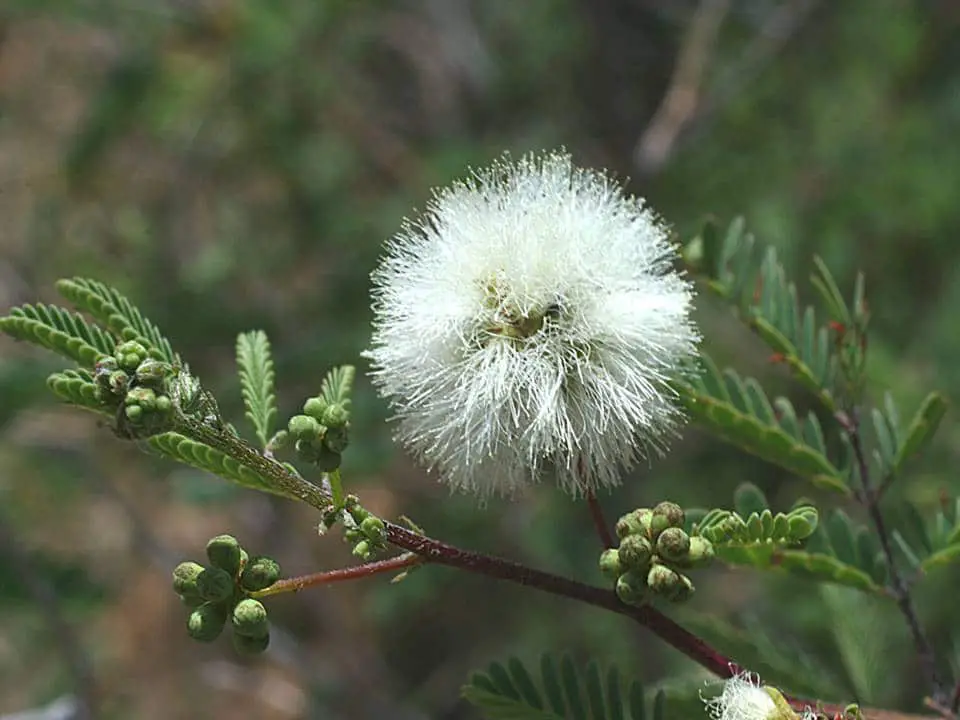The Acacia angustissima is a small-sized plant that can be considered as a shrub or a small tree which belongs to the fabaceous plant family, being widely located in regions of Mexico and the United States, in the central part of America as well than in South America, Pakistan and India.
Description of Acacia angustissima
Acacia angustissima is traditionally known by various names such as timbre, charcoal, as acacia bramble and also as timbe. This plant in optimal conditions can measure from 1 m to 4 m high, it tends to flower between the months of June until reaching September in the form of spheres that appear as white inflorescences which have an approximate diameter of about 1.3cm. This plant has certain elements that make it toxic if ingested incorrectly, among them are cyanogenic glycosides as well as others such as dimethyltryptamine which can be found in the bark and in its leaves as well as in its seeds.
Uses of Acacia angustissima
Despite its toxicological characteristics, the seed of the acacia angustissima After a special process and good manipulation, large sources of protein can be extracted that can have many uses that will be explained below:
Medical uses
Acacia angustissima is a plant that is used mainly for digestive diseases such as diarrhea, as a substance for external use for inflammation, to cure respiratory and throat-related diseases such as tonsillitis, pharyngitis and even to soothe toothaches, arthritis and for considerable skin lesions for which the lavender oiland even to slightly stop the development of stomach bacteria such as Staphylococcus aureus and the one commonly known as Escherichia coli, usually taken in the form of tea.
In indigenous villages, infusions are made with the bark of this type of acacia and even with the roots which are ingested orally for about 3 days as a treatment to recover from bowel movements followed by eating cold foods very frequently. In this way, the bark mixed with a little lime is boiled and eaten hot and liquid before breakfast to mature the digestive system of children who are still breastfeeding. In this way it can also be administered as a curative means for anemic people but in this case drinking this tea, but only the bark with the stem several times a day.
These types of drinks help regulate gastritis and also against other symptoms such as enlarged spleen, weak heart, typhoid fever and diseases caused by parasites.
Alcoholic beverages
Acacia angustissima is also used to produce certain liquors, such as pulque, which is made with the bark of this plant, or comiteco, which is made by fermenting the sap of this shrub together with that of other trees such as maguey and pilonchillo. . The planting of the plants with which these drinks were made dates from the times of the colonization when the farmers drank these saps without distillation and it is that when the 16th century arrived, Spanish monks brought stills to these towns with which they began to distill these drinks.
When it began to be produced, the sap was extracted from the center of the plant, which remains like the popular pulque in which it is only fermented, with the difference that it later goes through a distillation process that makes it look like tequila but does not belong to this class, and neither of mezcal or bacanora and sotol, since these are obtained by cooking and distilling the upper part of the agave and when the conquistadors arrived on the American continent this was proclaimed as the very fine liquor that was could do in New Spain.
This drink, which has among its components the acacia angustissima, appears reflected in the list of the best 77 liqueurs, earning first place from the Naval Museum of the City of Madrid in Spain, which has been cited since before the 19th century.
Manufacture of fodder for livestock
 The Acacia angustissima has the property of being able to use its seeds to make a supplement for livestock feed based on dry herbs or green plants, it has large amounts of protein and this plant to protect itself from animals that want to use its proteins contains approximately 6% of a substance called tannin with which it was used to transform the skin of animals into leather.
The Acacia angustissima has the property of being able to use its seeds to make a supplement for livestock feed based on dry herbs or green plants, it has large amounts of protein and this plant to protect itself from animals that want to use its proteins contains approximately 6% of a substance called tannin with which it was used to transform the skin of animals into leather.
